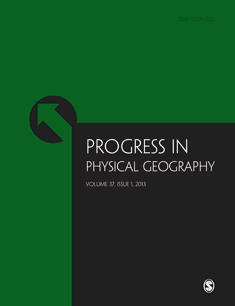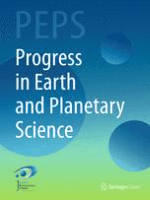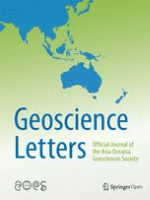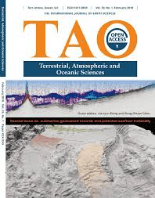
Geosciences
Scope & Guideline
Fostering Innovation in Geosciences Research.
Introduction
Aims and Scopes
- Terrestrial Biogeochemistry:
Research on the interactions between biological processes and the cycling of nutrients and elements within terrestrial ecosystems, focusing on carbon, nitrogen, and phosphorus dynamics. - Marine Ecosystem Dynamics:
Studies examining the processes influencing productivity, nutrient cycling, and biogeochemical interactions in marine environments, including the effects of climate change. - Climate Change Impact Assessment:
Analyses of the effects of climate variability and extreme weather events on ecosystems, particularly in relation to carbon cycling and greenhouse gas emissions. - Soil and Water Interactions:
Investigations into the relationships between soil properties, hydrology, and their influence on carbon storage and emissions, especially in wetland and agricultural systems. - Remote Sensing and Modeling:
Utilization of remote sensing technologies and advanced modeling techniques to monitor environmental changes and predict future scenarios in various ecosystems. - Microbial Ecology:
Exploration of microbial communities and their roles in nutrient cycling, soil health, and ecosystem functioning, particularly in extreme environments. - Paleoecological Studies:
Research aimed at understanding past climatic conditions and ecological responses through the analysis of sediment cores and fossil records. - Ecosystem Restoration and Management:
Focus on strategies for restoring degraded ecosystems and managing natural resources sustainably, considering both ecological and socio-economic factors.
Trending and Emerging
- Carbon Cycle Dynamics:
There is a growing focus on understanding the complexities of carbon cycling across various ecosystems, including the role of soil, aquatic systems, and vegetation in carbon storage and emissions. - Impact of Climate Extremes:
Research examining the effects of extreme weather events and climate variability on ecosystems is trending, highlighting the need for resilience and adaptation strategies. - Microbial Contributions to Biogeochemical Cycles:
Emerging studies emphasize the significance of microbial communities in nutrient cycling and ecosystem health, particularly in the context of climate change. - Innovative Remote Sensing Applications:
Advancements in remote sensing technologies are increasingly utilized for monitoring ecosystem dynamics and assessing environmental changes on a larger scale. - Sustainable Land Management Practices:
There is a rising trend in research focusing on sustainable agricultural and land management practices that enhance carbon sequestration and minimize environmental impacts. - Ecosystem Services Assessment:
Research assessing the services provided by ecosystems, including carbon storage, water purification, and biodiversity, is gaining importance in policy and management discussions. - Interdisciplinary Approaches:
An increasing number of studies are adopting interdisciplinary frameworks that integrate geology, biology, and atmospheric sciences to address complex environmental issues. - Ocean Alkalinity Enhancement:
Research into strategies for enhancing ocean alkalinity as a means to mitigate climate change effects is emerging as a significant area of focus.
Declining or Waning
- Traditional Geomorphology:
Research focusing on static landforms and their classification has waned as interdisciplinary approaches incorporating dynamic processes and climate interactions gain traction. - Single-Species Studies:
There is a noticeable decline in research centered on individual species, as the focus shifts towards ecosystem-level interactions and functional diversity. - Historical Climate Reconstructions:
While still relevant, the emphasis on reconstructing past climates solely through historical data has diminished, with a growing interest in integrating modeling and empirical data. - Isolated Soil Studies:
Research concentrating solely on soil properties without considering broader ecosystem interactions is becoming less common, as integrative studies are favored. - Local Case Studies:
The prevalence of localized research studies is declining as the field shifts towards large-scale, global assessments to understand broader environmental trends.
Similar Journals

Progress in Physical Geography-Earth and Environment
Exploring the dynamic intersection of Geography and Planetary Science.Progress in Physical Geography-Earth and Environment is a premier academic journal published by SAGE Publications Ltd, renowned for its contributions to the fields of Earth and Planetary Sciences and Geography. With a distinguished history spanning from 1977 to 2024, this journal maintains a robust Q1 classification in both Earth and Planetary Sciences and Geography, Planning and Development, reflecting its high impact and rigorous scholarly standards. As evidenced by its Scopus rankings, it stands at the forefront of research, positioned in the 89th percentile among leading journals. Progress in Physical Geography aims to facilitate the exchange of innovative research, insights, and methodologies, making it an essential resource for researchers, professionals, and students dedicated to understanding and shaping the natural environment. While currently not designated as an Open Access journal, the wide accessibility of its content, combined with its significant impact factor, underscores its importance within the academic community seeking to advance knowledge and application in geography and environmental sciences.

Progress in Earth and Planetary Science
Advancing the frontiers of Earth and planetary research.Progress in Earth and Planetary Science is a premier open-access journal published by Springer, dedicated to advancing the field of Earth and planetary sciences. Since its inception in 2014, this journal has emerged as a prominent platform, achieving a Q1 ranking in the Earth and Planetary Sciences category, reflecting its high impact and rigorous peer-review process that ensures the highest quality of published research. With its broad scope encompassing diverse subfields within the Earth sciences, the journal aims to foster interdisciplinary collaboration and innovation among researchers, professionals, and students. The journal's commitment to accessibility through its open access model promotes the dissemination of knowledge globally, allowing critical research findings to be shared widely within the scientific community. Located in the United Kingdom, Progress in Earth and Planetary Science continues to play an essential role in shaping the future of Earth and planetary research from 2014 to 2024 and beyond.

Earth Interactions
Bridging Disciplines to Decode Earth’s ComplexitiesEarth Interactions is a prominent journal that serves as a critical platform for interdisciplinary research in the field of Earth and Planetary Sciences. Published by the American Meteorological Society, this journal has established itself as a key resource for scholars, researchers, and professionals dedicated to understanding Earth's complex systems and their interactions. With an impressive Q1 ranking in the category of Earth and Planetary Sciences for 2023, it reflects a commitment to high-quality scholarship and impactful contributions to the field. The journal, with its dedicated coverage from 2004 to 2024, encompasses a wide array of topics, providing comprehensive insights into geological, atmospheric, and environmental phenomena. Although it operates under a non-open access model, its significance is underscored by its placement in the top percentile of Scopus rankings (Rank #89/195), making it an exciting resource for those pursuing advanced studies and applications related to Earth's systems.

Journal of Asian Earth Sciences-X
Exploring the Depths of Asian GeosciencesJournal of Asian Earth Sciences-X, a distinguished publication by ELSEVIER, is at the forefront of Earth and planetary sciences, particularly focusing on the dynamic fields of geology and earth-surface processes. As an Open Access journal since 2019, it provides unparalleled access to high-quality research, fostering global collaboration and dissemination of knowledge. With an impressive impact factor and ranking in the Q2 category for both Earth-Surface Processes and Geology, it serves as a crucial platform for researchers, professionals, and students alike to share their findings and insights. Situated in the United Kingdom, the journal thrives on contributions that enhance our understanding of Asian geosciences within a broader global context, aiming to tackle major challenges such as climate change and natural resource management. By bridging regional studies with global perspectives, the Journal of Asian Earth Sciences-X is not only a vital resource for academia but also supports sustainable development initiatives across the region.

Biogeosciences
Empowering researchers with open access to vital biogeoscience insights.Biogeosciences, published by COPERNICUS GESELLSCHAFT MBH in Germany, is a prestigious open access journal that has been a leading platform for innovative research since its establishment in 2004. With an impressive impact reflected in its Q1 rankings within both the Earth-Surface Processes and Ecology, Evolution, Behavior and Systematics categories, it caters to a diverse readership encompassing researchers, professionals, and students engaged in the life sciences and earth sciences. The journal's commitment to disseminating high-quality research is evident from its exemplary Scopus rankings, highlighting its role in fostering advancements and discussions in biogeoscience. With full open access options, readers worldwide can freely explore significant findings that contribute to our understanding of ecological and geoscientific principles. As the journal converges into its next decade, it continues to be an essential resource for those seeking to bridge the disciplines of biology and earth sciences.

Frontiers of Earth Science
Exploring the Depths of Earth and BeyondFrontiers of Earth Science is a prominent academic journal in the field of Earth and Planetary Sciences, published by Springer. With an ISSN of 2095-0195 and an E-ISSN of 2095-0209, this journal serves as a significant platform for researchers and professionals to disseminate their findings from 2007 to 2024. It is recognized for its impactful contributions within the category of Earth and Planetary Sciences, boasting a respected Q2 ranking in 2023. With a Scopus ranking of 64 out of 195, placing it in the 67th percentile, Frontiers of Earth Science continues to drive academic dialogue and innovation. The journal is dedicated to exploring a diverse range of topics, including geology, meteorology, and environmental science, and amplifying the understanding of Earth systems through rigorous research. Located in New York, USA, this journal embraces an Open Access model, ensuring that groundbreaking research is readily available to the global scientific community, thereby enhancing its accessibility and impact.

Geosfernye Issledovaniya-Geosphere Research
Bridging Disciplines for Global Environmental SolutionsGeosfernye Issledovaniya-Geosphere Research, published by TOMSK STATE UNIVERSITY, is a significant addition to the scholarly discourse within the fields of Earth and Planetary Sciences, Ecology, and Geography. With a focus on innovative research and insights that span a broad spectrum of environmental and geographical studies, this journal aims to provide a platform for researchers and students alike to disseminate their findings and discuss pressing issues facing our planet. Though classified in the Q4 quartile for its 2023 metrics, it serves as an important venue for early-career scientists and scholars from the Russian Federation and beyond to contribute to the global dialogue surrounding geosciences. The journal operates with various access options, making it accessible to a diverse audience. It encourages submissions that inspire robust discussion and exploration of topics vital to our understanding of the geosphere and its intricate dynamics. Covering the pivotal years from 2019 to 2024, Geosfernye Issledovaniya-Geosphere Research is poised to enhance its relevancy and impact within the academic community.

One Ecosystem
Empowering research that shapes sustainable practices and policies.One Ecosystem is a leading academic journal published by PENSOFT PUBLISHERS, dedicated to advancing the understanding of ecosystems through interdisciplinary research. Since its inception in 2016, this Open Access journal has fostered accessibility to vital scientific findings, facilitating the global exchange of knowledge in the fields of Agricultural and Biological Sciences, Earth and Planetary Sciences, and Ecology. With an impressive impact factor reflected in its Q1 and Q2 rankings across multiple categories as of 2023, including a noteworthy rank of 35/193 in the Agricultural and Biological Sciences (miscellaneous) field, One Ecosystem is positioned as a critical resource for researchers, professionals, and students seeking to deepen their understanding of ecological interactions and conservation strategies. The journal is based in Bulgaria, at 12 PROF GEORGI ZLATARSKI ST, SOFIA 1700, and continues to pave the way for innovative research that informs policy and education in ecological preservation and sustainable practices.

Geoscience Letters
Bridging Science and Society in GeosciencesGeoscience Letters, published by Springer, is a prominent open-access journal in the field of Earth and Planetary Sciences, recognized for its dedication to advancing knowledge and research in this vital area of study. With a reported impact factor that reflects its esteemed position—ranking in the Q1 quartile of Earth and Planetary Sciences, particularly as the journal ranks #48 out of 195 in the general category according to Scopus—the journal serves as a vital resource for researchers, professionals, and students. Since its inception in 2014, Geoscience Letters has facilitated the dissemination of high-quality research and critical insights, aiming to bridge the gap between scientific discovery and societal needs. Its commitment to open access ensures that the latest findings are readily available to a global audience, thus enhancing collaboration and innovation within the geosciences community.

TERRESTRIAL ATMOSPHERIC AND OCEANIC SCIENCES
Pioneering Discoveries in Terrestrial SciencesTERRESTRIAL ATMOSPHERIC AND OCEANIC SCIENCES, published by SpringerNature, is a distinguished peer-reviewed journal that has been an essential platform for innovative research in the fields of atmospheric science, oceanography, and Earth and planetary sciences since its inception. With an Open Access policy established in 1990, the journal ensures wide dissemination of knowledge, allowing researchers, professionals, and students to access cutting-edge findings without restrictions. Based in Switzerland and featuring a comprehensive coverage from 1996 to 2024, the journal currently holds a Q3 ranking across various categories, indicating its growing significance in the scientific community. Although it is positioned within the 39th percentile in Earth and Planetary Sciences, its commitment to fostering high-quality research makes it a valuable resource for advancing understanding of terrestrial environments and their interconnections. Researchers seeking a platform for their work in atmospheric and oceanic sciences will find TERRESTRIAL ATMOSPHERIC AND OCEANIC SCIENCES to be an ideal venue for sharing their insights with a global audience.